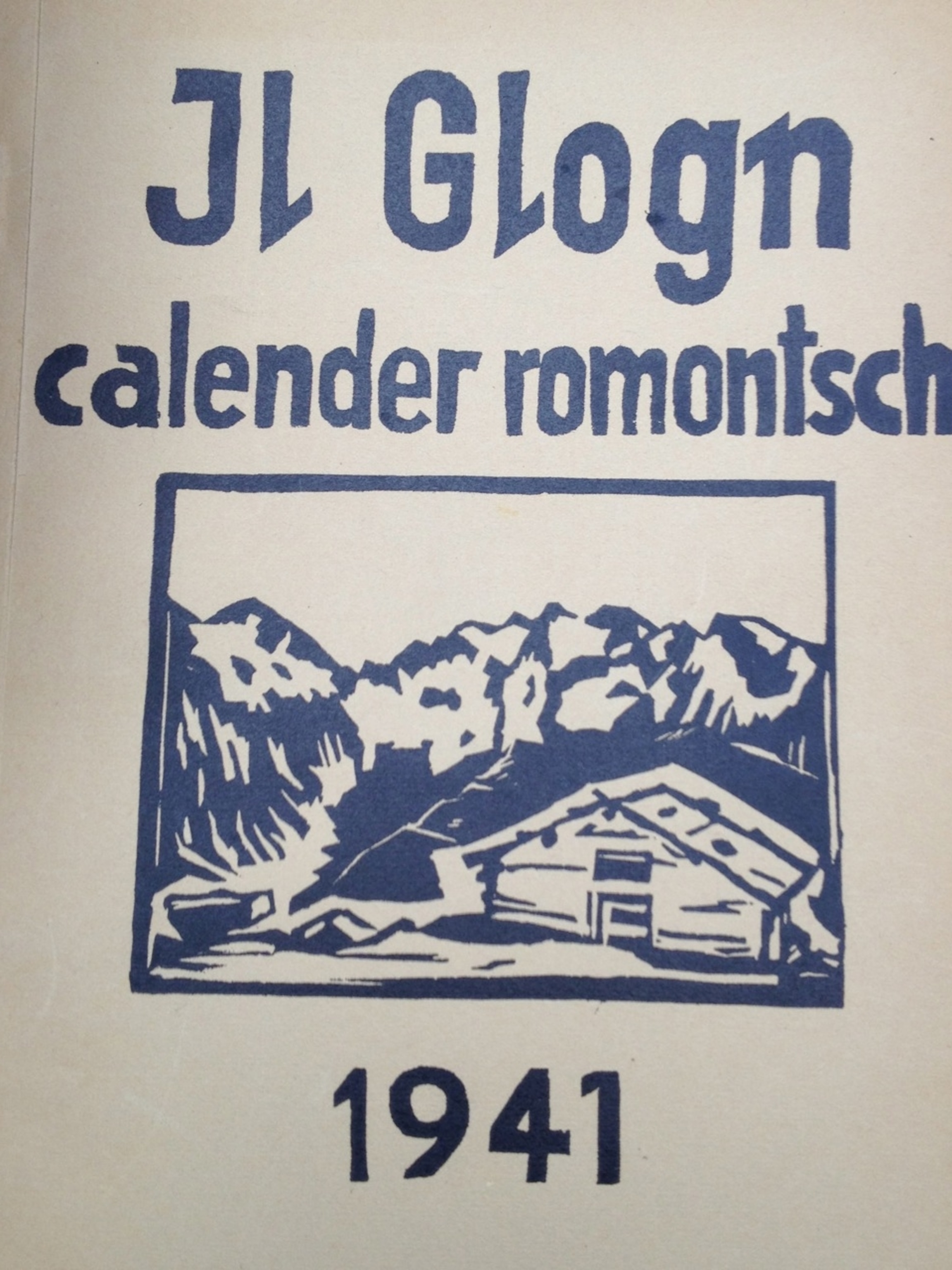In 7th grade I almost failed Latin.
It was the declensions that got me—also, as a 12-year old, learning a dead language was as abstract as the idea of traveling the world.
That all changed the first time I came to Europe, visited a Roman ruin, and discovered that I could read the weathered inscriptions on a 2,000 year-old stone wall. For me to comprehend a message scrawled by a disappeared civilization was simply illuminating. Latin suddenly made sense and it became my key to other languages and therefore my key to traveling the world.
Latin is still a very dead language—however, its closest living relative is doing just fine in the mountains and valleys of southeast Switzerland. In fact, you can even watch it on television.

“Welcome” in Romansh on a shop sign in Samedan, Engadin, Switzerland (Photo by AE/NGT)
Romansh is the fourth official language of Switzerland (after Swiss German, French and Italian) and its proximity to Latin is astounding: Chesa is “house”, Chaun is “dog”, and paun is “bread”.
“It’s a Latin dialect, really,” explains Guido Ratti, a native-born Romansh speaker from the village of Samedan in the Swiss canton of Grischun. He spoke only Romansh until he was about eight years old, when he began studying his first foreign language at school: Swiss German.
“We always say—whoever knows Romansh, knows more,” says Guido, pointing out how the Romansh people of Switzerland tend to pick up other Romance languages quickly.
“Catalan is similar to Romansh and so are the dialects of Italy—so is Romanian,” he adds. “I remember in 1989 when Ceauşescu gave his final speech, I watched it on television and understood everything.
Native Romansh-speaker Niculin Bazzell speaks six different languages (Romansh, German, Italian, French, Spanish and English)—and he uses almost all of them “everyday” he says, mainly working with tourists.
“Our problem in Engadin is that we are so polite, we speak in whatever language our guest speaks,” explains Guido. People from all over the world come to Engadin for the mountains—in summer to hike and bike and in winter to ski. Guido is proud of the region’s hospitality, but feels it is crucial that they uphold Romansh in the area.
In Engadin, the first three years of school are taught entirely in Romansh, after which instruction gradually switches over to Swiss German. There is a full-time Romansh radio station and Romansh language television plays on Swiss TV, every night from 6:00 to 7:00 pm. (It’s like watching the news in Latin.)
According to Guido, there are “about 100,000 people who still speak [Romansh],” though the Swiss census counts only 60,000 speakers. In any case, Romansh is a minority language, spoken by less than 1% of the population. This group is broken down into four main dialects which together form a kind of linguistic tidal pool “leftover from the Roman soldiers who used to live in Engadin.”
Unlike Swiss German, Romansh is, in fact, a written language—a fact that plays a role in its survival. The Bible was first printed in Romansh in 1530, at the time of the reformation. And yet, oddly, Romansh was not made an official language of Switzerland until 1938, when the country voted by referendum to include it along with German, French and Italian.
“My language will survive!” proclaims Guido. Not only for its government protection but, “because so many people are conserving it.” Today, there is even a Romansh Wikipedia, however the long-term survival depends on parents passing it onto their children.
“I am completely Romansh and my sons speak Romansh but they both married girls from Zurich, so it’s much harder with my grandchildren,” explains Guido. “For example, I would love to teach my granddaughter Romansh but I only see her a few times a month.”
Aside from the school system, there is an intensive Romansh language workshop that takes place in Engadin for one week each summer, which attracts about 50 students per year. I’ve already added the course my Swiss wish list, but until that happens, Eau sun fich cuntaint dad imprender ün pô Rumauntsch (I’m very happy to learn a little Romansch) just by traveling in the area.
Of my favorite phrases is Piglia Pacific! (Pee-lya pa-chee-feek), or “take it easy!” as well as Eviva! (Ey-vee-va), or “Cheers!”, shouted to friends as a toast.
I often stress the importance of preserving rare and lesser-known languages, and while Romansh is not endangered as some, it is too often overlooked by visitors who travel to this part of Switzerland.
I don’t think Latin teachers will ever fully convince their young students that learning a dead language is worth the effort, but I am happy to argue the importance of learning a living (but less-known) language of Switzerland—if only grascha fich (thank you). It may not help you get directions or know how much this or that thing costs, but as a traveler, it will connect you to these valleys and the people who have lived here since the Romans.
And that, in my opinion, is much, much better than passing 7th grade Latin.

An old Romansh book for sale at a market in Pontresina (Photo by AE/NGT)
Discover more from Slow Travel News
Subscribe to get the latest posts sent to your email.



